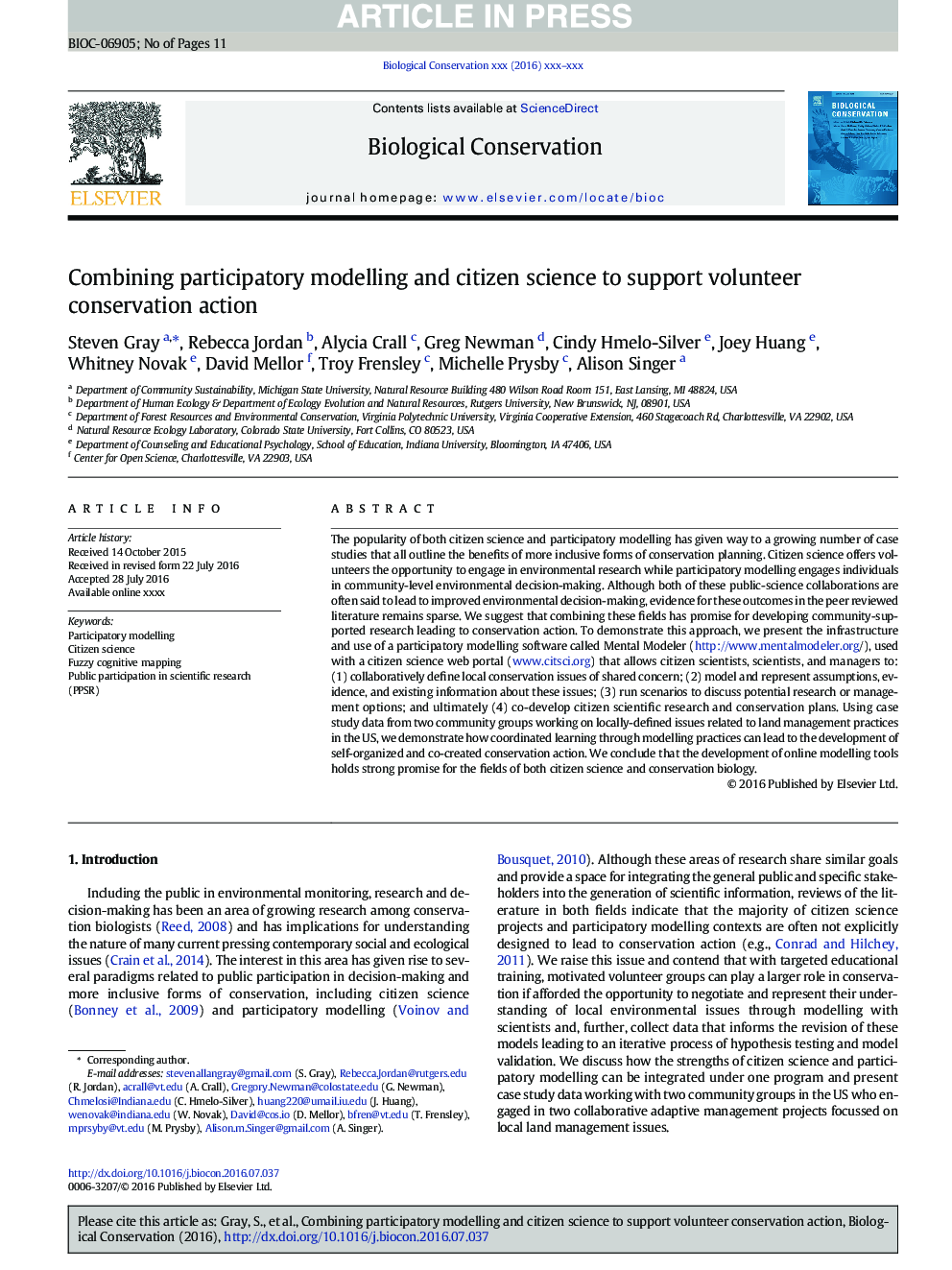| Article ID | Journal | Published Year | Pages | File Type |
|---|---|---|---|---|
| 5743179 | Biological Conservation | 2017 | 11 Pages |
Abstract
The popularity of both citizen science and participatory modelling has given way to a growing number of case studies that all outline the benefits of more inclusive forms of conservation planning. Citizen science offers volunteers the opportunity to engage in environmental research while participatory modelling engages individuals in community-level environmental decision-making. Although both of these public-science collaborations are often said to lead to improved environmental decision-making, evidence for these outcomes in the peer reviewed literature remains sparse. We suggest that combining these fields has promise for developing community-supported research leading to conservation action. To demonstrate this approach, we present the infrastructure and use of a participatory modelling software called Mental Modeler (http://www.mentalmodeler.org/), used with a citizen science web portal (www.citsci.org) that allows citizen scientists, scientists, and managers to: (1) collaboratively define local conservation issues of shared concern; (2) model and represent assumptions, evidence, and existing information about these issues; (3) run scenarios to discuss potential research or management options; and ultimately (4) co-develop citizen scientific research and conservation plans. Using case study data from two community groups working on locally-defined issues related to land management practices in the US, we demonstrate how coordinated learning through modelling practices can lead to the development of self-organized and co-created conservation action. We conclude that the development of online modelling tools holds strong promise for the fields of both citizen science and conservation biology.
Related Topics
Life Sciences
Agricultural and Biological Sciences
Ecology, Evolution, Behavior and Systematics
Authors
Steven Gray, Rebecca Jordan, Alycia Crall, Greg Newman, Cindy Hmelo-Silver, Joey Huang, Whitney Novak, David Mellor, Troy Frensley, Michelle Prysby, Alison Singer,
